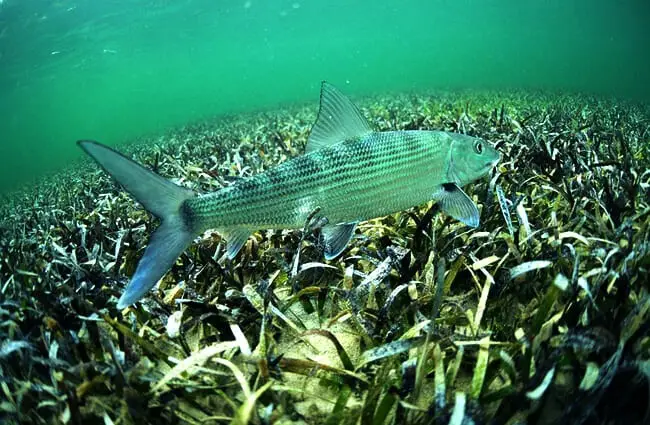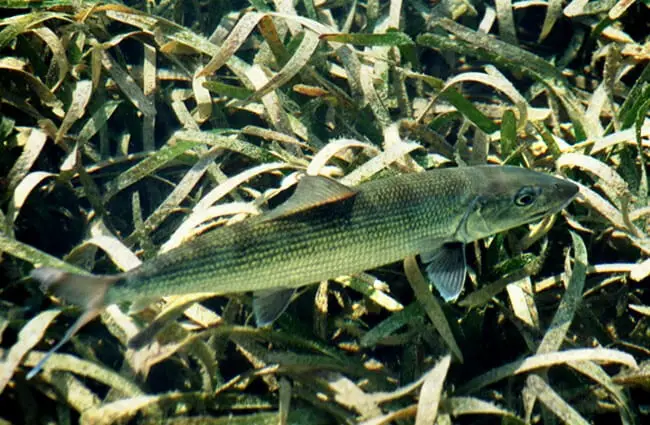The bonefish, a creature of stunning silver sheen and remarkable agility, is a captivating subject for both seasoned scientists and casual ocean enthusiasts. This guide delves into the fascinating world of Albula vulpes, exploring its biology, behavior, ecological role, and even its cultural significance. Prepare to uncover the secrets of this exceptional fish.

Understanding the Bonefish
Bonefish are members of the Albulidae family, a relatively ancient lineage of fish. They are characterized by their elongated bodies, deeply forked tails, and a bony protuberance on their forehead—hence the name. This bony structure is not a braincase extension but a unique cranial feature. These fish typically reach lengths of around 2 to 3 feet and can weigh up to 14 pounds, though larger specimens have been recorded. Their silvery scales provide excellent camouflage in the shallow waters they inhabit, and they possess exceptional eyesight, crucial for spotting prey and avoiding predators.
Habitat and Distribution
Bonefish are found in tropical and subtropical waters worldwide. Their primary range extends from the Bahamas and Florida Keys, throughout the Caribbean, and along the coasts of Central and South America. They also inhabit the Indo‑Pacific region, including areas around Hawaii, the Philippines, and Australia. These fish prefer shallow coastal habitats, such as flats, mangrove lagoons, and seagrass beds. These environments offer protection from larger predators, an abundance of prey, and the calm waters necessary for their unique feeding behavior. Bonefish are highly migratory, traveling significant distances to spawn and find suitable feeding grounds.

Diet and Feeding Behavior
Bonefish are specialized bottom feeders, primarily consuming invertebrates such as crustaceans—crabs, shrimp—and mollusks. Their diet also includes polychaete worms and small fish. What sets bonefish apart is how they feed. They use their sensitive lips and a specialized suction feeding mechanism to locate and extract prey from the substrate. They aren’t aggressive feeders; instead, they carefully sift through the seabed, using their sense of touch and taste to identify edible items. This delicate feeding behavior is often described as “mudding,” as they create visible trails in the soft sediment. Observing a bonefish “mudding” is a clear sign of active feeding.
Reproduction and Life Cycle
Bonefish reproduction is still not fully understood, as spawning events are difficult to observe in the wild. However, scientists believe that they reproduce in offshore waters during the warmer months. Spawning aggregations likely occur, bringing together numerous individuals to release eggs and sperm. The eggs are pelagic, meaning they float freely in the water column, and the larvae undergo a period of development before settling in shallow coastal habitats. Bonefish are relatively slow growing and long lived, with some individuals potentially reaching ages of 15 years or more. This slow growth rate makes them particularly vulnerable to overfishing.

Ecological Role and Interactions
Bonefish play a vital role in the coastal ecosystems they inhabit. As bottom feeders, they help to cycle nutrients and maintain the health of seagrass beds and coral reefs. They also serve as prey for larger predators, including sharks, barracuda, and rays. Their presence is often an indicator of a healthy and thriving coastal environment. Bonefish interact with other species in complex ways. For example, their feeding activity can disturb sediment, creating opportunities for other invertebrates to colonize. They also compete with other bottom feeders for resources.
Bonefish and Human Culture
Bonefish hold significant cultural importance in many coastal communities. They are highly prized by anglers, renowned for their speed, power, and challenging nature. “Flats fishing” for bonefish has become a popular ecotourism activity, generating economic benefits for local communities. Bonefish are also featured in local folklore and art, reflecting their cultural significance. Sustainable fishing practices are crucial to ensure the long term health of bonefish populations and the preservation of this valuable cultural resource.

Conservation Status and Threats
Bonefish populations are facing increasing threats from habitat loss, pollution, and overfishing. Coastal development, including dredging and construction, destroys essential spawning and feeding grounds. Pollution from agricultural runoff and sewage contaminates the water, harming bonefish and other marine life. Overfishing, both targeted and as bycatch, depletes bonefish populations. Bonefish are currently listed as “Near Threatened” by the International Union for Conservation of Nature (IUCN). Effective conservation measures, including habitat protection, sustainable fishing regulations, and pollution control, are essential to ensure the survival of this iconic species.
Encountering Bonefish in the Wild
If you encounter a bonefish while swimming or exploring coastal areas, observe it from a distance and avoid disturbing its natural behavior. Do not attempt to handle or feed the fish. Report any sightings of injured or distressed bonefish to local authorities. Remember that bonefish are sensitive creatures, and any disturbance can have negative impacts on their well‑being.
Caring for Bonefish in Captivity
Caring for bonefish in captivity requires specialized knowledge and resources. They need a large tank with a sandy substrate, plenty of open swimming space, and a powerful filtration system to maintain water quality. A varied diet of crustaceans, mollusks, and small fish is essential. Regular monitoring of water parameters, including salinity, temperature, and pH, is crucial. Bonefish are sensitive to stress, so it’s important to provide a calm and stable environment. It is also important to remember that bonefish need a lot of space and cannot thrive in small tanks.

Fascinating Bonefish Facts
- Bonefish are incredibly fast swimmers, capable of reaching speeds of up to 30 miles per hour.
- Their silvery scales contain specialized pigment cells called iridophores, which reflect light and create a shimmering effect.
- Bonefish have a highly developed lateral line system, which allows them to detect vibrations in the water and locate prey.
- The bony protuberance on their forehead is thought to play a role in electrosensitivity, allowing them to detect the electrical fields produced by other organisms.
- Bonefish are known for their “tailing” behavior, where they use their tail to stir up sediment and expose buried prey.
The bonefish remain a captivating species, embodying the beauty and complexity of the marine world. By understanding its biology, ecology, and threats, we can work towards ensuring its survival for generations to come. Its resilience and adaptability are a testament to the power of nature, and its continued presence in our coastal ecosystems is a vital sign of a healthy planet.

![Red Angus Closeup of a beautiful Red Angus cowPhoto by: U.S. Department of Agriculture [pubic domain]https://creativecommons.org/licenses/by/2.0/](https://animals.net/wp-content/uploads/2020/03/Red-Angus-4-238x178.jpg)




![Red Angus Closeup of a beautiful Red Angus cowPhoto by: U.S. Department of Agriculture [pubic domain]https://creativecommons.org/licenses/by/2.0/](https://animals.net/wp-content/uploads/2020/03/Red-Angus-4-100x75.jpg)

